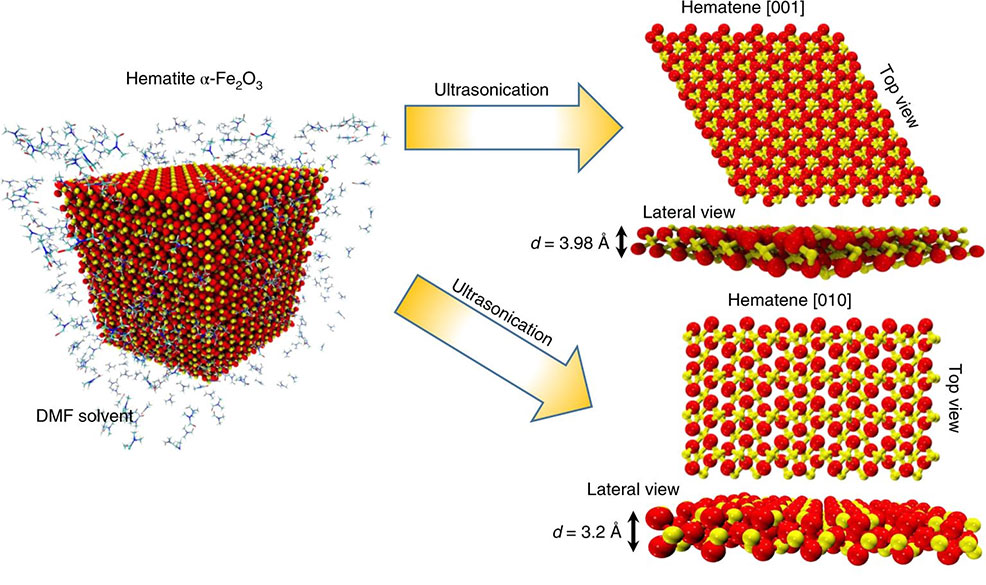
2nd August 2018 New two-dimensional material discovered Researchers have described a new two-dimensional material called "hematene", derived from hematite, with application as a photocatalyst.
Following the isolation of graphene in 2004, a race began to synthesise new two-dimensional materials. These are single-layer substances with a thickness of just a few nanometres (billionths of a metre). Thanks to their reduced dimensionality, they have unique properties and play a key role in the development of nanotechnology and nanoengineering. An international group of researchers, including Brazilian scientists affiliated with the University of Campinas (UNICAMP), have succeeded in producing a new material with these characteristics. The team extracted a 2D material – which they have named "hematene" – from ordinary iron ore, like that mined in many parts of the world. As illustrated above, Hematene is only three atoms thick. It is thought to have enhanced photocatalytic properties. “The material we synthesised can act as a photocatalyst to split water into hydrogen and oxygen, so that electricity can be generated from hydrogen, for example, as well as having several other potential applications,” said Douglas Soares Galvão, one of the study authors. The new material was exfoliated from hematite (pictured below), one of the most common minerals on earth and the main source of iron, which is the cheapest metal, used in many products and above all to make steel.
Hematene was synthesised by the liquid-phase exfoliation of hematite ore in an organic solvent, N,N-dimethylformamide (DMF). Transmission electron microscopy confirmed the exfoliation and formation of single sheets, at a thickness of only three iron and oxygen atoms (monolayer) and randomly stacked sheets (bilayer). As well as being an efficient photocatalyst, hematene could also serve as an ultra-thin magnetic material for spintronic-based devices, the researchers say. "2D magnetism is becoming a very exciting field with recent advances in synthesising such materials, but the synthesis techniques are complex and the materials' stability is limited," said Professor Pulickel Ajayan, a materials scientist at Rice University in Texas, who collaborated on the study. "Here, we have a simple, scalable method, and the hematene structure should be environmentally stable."
Comments »
If you enjoyed this article, please consider sharing it:
|









